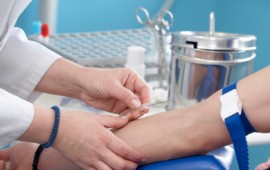New Information on Blood and Cellular Donation
Author: Shannon Miller Lifestyle

Do you donate blood? Are you on a donor list for stem cells or bone marrow? Has it ever occurred to you to be a donor?
With modern technology and advances in science, being a blood or cellular donor is easier than ever, but the need is very great. Not only people in destructive injuries need blood or parts of blood, but also people who are very sick or have cancer need platelets or other parts of the blood.
What types of donations are there?
- Blood donation. You can give blood every eight weeks if you are over 16 and over 110 pounds. All types of blood are needed. It only takes 10 minutes to give, and you can check AABB to see when and where the next donation center is open for donations.
- Platelets or Plasma donation. These donations tend to take longer, but they only take the platelets or plasma, and then return the rest of the blood to the donor’s body. Platelets are used for people who have weakened immune systems. A platelet donation can be used for up to 18 different treatments. Plasma and platelets can be collected together for people of AB type blood. Plasma of this blood type can then be used to help people of any blood type.
- Stem Cell or Bone Marrow Donation. That’s right. You can offer to be a stem cell donor. Why? Stem cells save lives for people with certain types of cancers and autoimmune diseases. You can sign up at bethematch.org, getswabbed.org, or deletebloodcancer.org. It’s a registry system, where you simply use a cheek-swab kit to be instantly entered into a database. If someone needs your stem cells or bone marrow, you will then get a call and go through the process to retrieve those cells.
Here is a video on a woman from Houston, Texas, whose life was saved by stem cell donation.
-
Ann is now cancer free, thanks to the donation of a complete stranger.
What happens if someone needs my stem cells or bone marrow?
In the case of a stem cell donation, the donor is given a special medicine for four days that increases the number of stem cells that he naturally produces. On donation day, the donor is given a treatment much like platelet donation, where the stem cells are removed from the blood and the other parts of the blood are returned to him.
This simple process gives the patient enough stem cells to begin to completely reproduce healthy stem cells within the patient’s body.
If someone needs your direct bone marrow, it is collected from the pelvis, using a syringe. This is an outpatient procedure, with expected recovery time of about a week.
